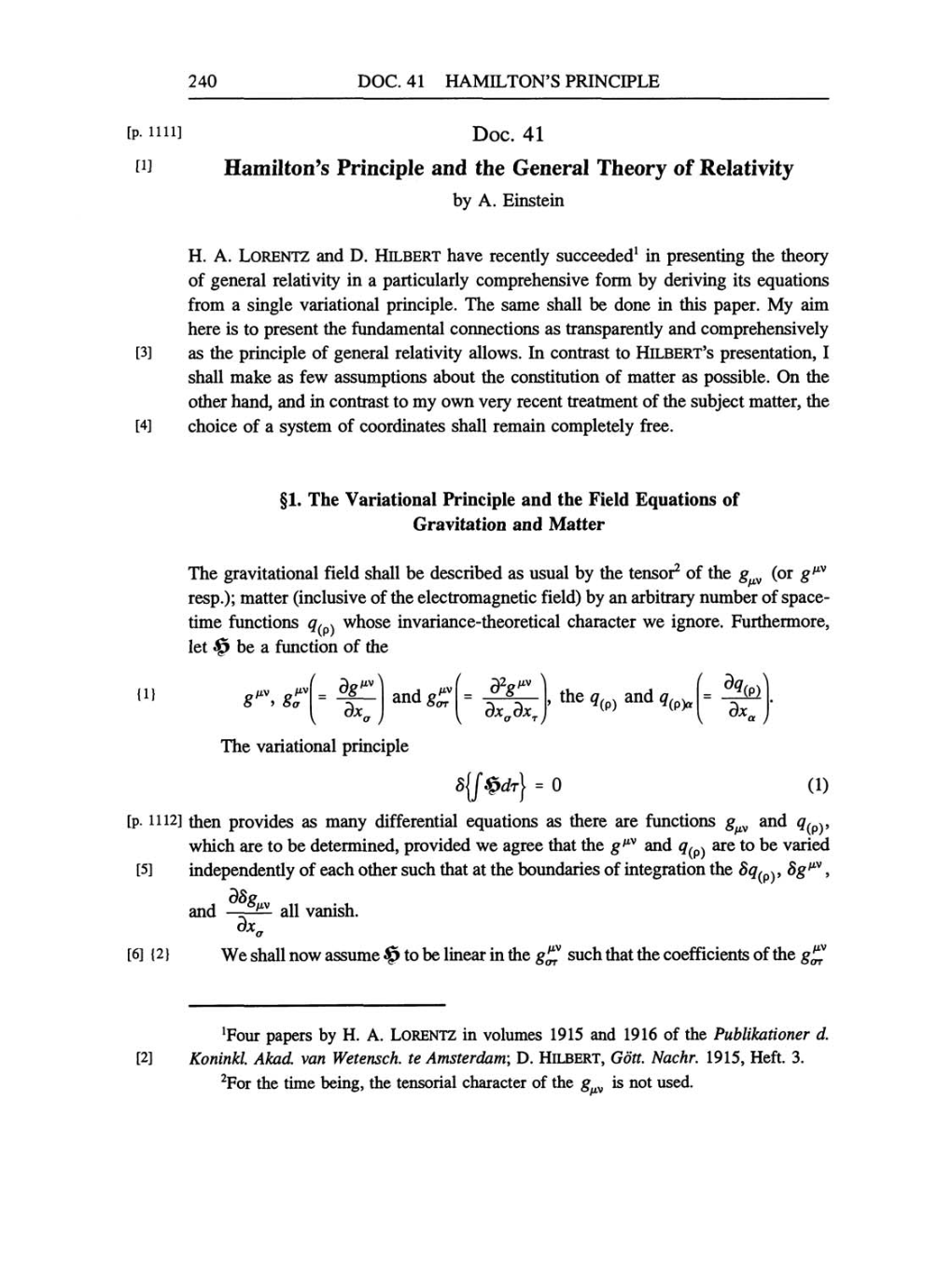240 DOC.
41
HAMILTON'S PRINCIPLE
Doc.
41
Hamilton's
Principle
and the General
Theory
of
Relativity
by
A. Einstein
[p.
1111]
[1]
H. A.
Lorentz
and
D.
Hilbert
have
recently
succeeded1
in
presenting
the
theory
of
general relativity
in
a particularly comprehensive
form
by deriving
its
equations
from
a
single
variational
principle.
The
same
shall be done in this
paper. My
aim
here is
to
present
the fundamental connections
as transparently
and
comprehensively
[3]
as
the
principle
of
general relativity
allows. In contrast
to
Hilbert's
presentation,
I
shall make
as
few
assumptions
about the constitution
of
matter
as
possible.
On the
other
hand,
and in contrast to
my own very
recent treatment
of
the
subject
matter,
the
[4]
choice
of
a
system
of coordinates shall remain
completely
free.
§1.
The Variational
Principle
and the Field
Equations
of
Gravitation
and Matter
The
gravitational
field shall be described
as
usual
by
the
tensor2
of
the
guv
(or
guv
resp.);
matter
(inclusive
of
the
electromagnetic
field)
by
an
arbitrary
number
of
space-
time functions
q(p)
whose invariance-theoretical character
we ignore.
Furthermore,
let
b
be
a
function
of
the
{1} guv,
guvo
=
dg
uv
dx
and
gor
uv
=
the
q(p)
and
q(p)a
dq(p).
dxa
The variational
principle
S{/bdr} =
0
(1)
[p. 1112]
then
provides
as
many
differential
equations as
there
are
functions
guv
and
q(p),
[5]
[6]
{2}
which
are
to
be
determined,
provided we
agree
that the
guv
and
q(p)
are
to
be varied
independently
of
each other such that
at
the boundaries of
integration
the
dguv,
and
ddguv/dxo
vanish.all
We
shall
now
assume
b
to be
linear
in
the
guvor
such that
the
coefficients
of
the
guvor
1Four
papers by
H.
a. lorentz in
volumes 1915
and 1916
of
the
Publikationer
d.
Koninkl. Akad.
van
Wetensch.
te Amsterdam;
D.
Hilbert, Gött. Nachr.
1915,
Heft.
3.
2For
the time
being,
the tensorial character
of
the
guv
is not used.
[2]
